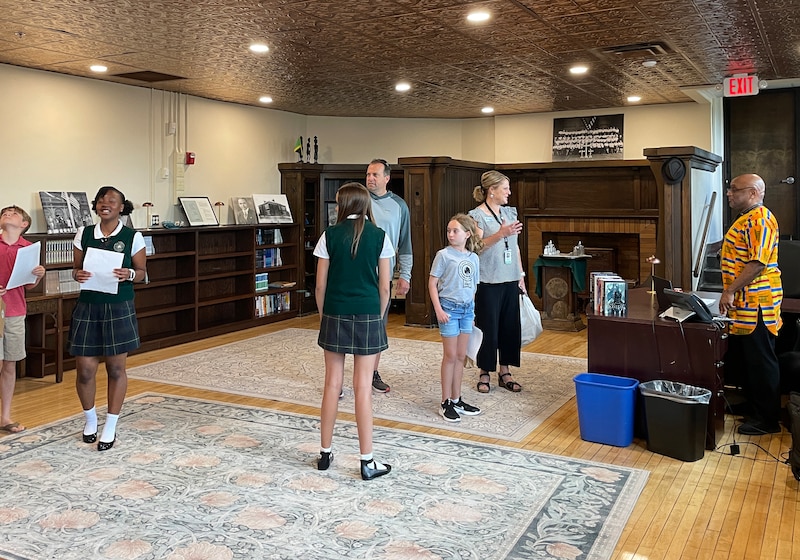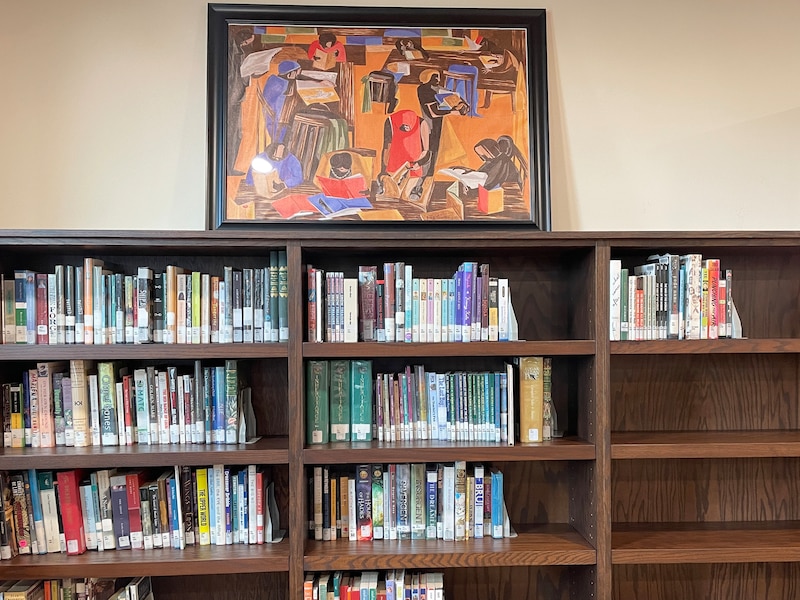Maurice Broaddus was a writer by trade and became a middle school librarian by accident.
The award-winning Afrofuturist and sci-fi author once filled in at The Oaks Academy middle school, where he was also a teacher, for the librarian going on maternity leave. The librarian never came back.
“Six, seven years later I’m still covering her maternity leave,” he joked.
But what started as mere chance has become an opportunity to mentor young writers, support artists of color, and restore a historic Indianapolis library that was the first in the city established specifically for Black residents.
“It’s been a lesson in collaboration, a lesson in building relationships, a lesson in dreaming alongside our neighbors,” said Broaddus, who is Black. “Ultimately, what does it look like to restore a space and then it be true to its purpose?”
Broaddus led the project to reopen the Paul Laurence Dunbar Library, established within the now-closed John Hope School No. 26 in 1922, to students at The Oaks Academy middle school, a private Christian school in the Martindale-Brightwood neighborhood. The library originally existed to serve Black residents in a de facto segregated part of the city. Its restoration after nearly 30 years of disuse will give Oaks students their own library collection, Broaddus said, while memorializing its place in Indianapolis history.

“We are honoring the past, but we’re doing present work,” he said.
The restored library opened last week on the first day of school at The Oaks. Many shelves are still empty — Broaddus is waiting on a major 1,000-book order — but he’s started curating three special collections on the Harlem Renaissance, the Black Arts Movement, and Afrofuturism.
As parents and new students walked through the building for middle school orientation last Tuesday, they lingered around the library. They saw shelves of rich, dark wood, an ornamental copper ceiling, and a working fireplace.
“It looks like a Harry Potter film in here, you know?” one parent said to her child.
“As well it should,” Broaddus said.
The team behind the project worked to pay homage to the original decor and accents of the space, he said. The library stopped operating in 1997, when John Hope School No. 26 of Indianapolis Public Schools shut down.
The Oaks Academy acquired the building in 2015, according to the school website, and currently has around 270 students in grades 6-8.
Before this year, students relied on the Indianapolis Public Library shared interlibrary system and requested books online that were delivered by Broaddus. They can continue to use that system, but now they also have an internal collection to browse.

In addition to aesthetics, Broaddus wants to honor the legacy of the space by ensuring it benefits the community, not just private school students. He said that’s why he established the Mari Evans Residency for Artists and Authors of Color.
The residency, named for the acclaimed Black poet, writer, and Indianapolis resident Mari Evans, will bring in a renowned author for two weeks to meet with students as well as hold a public-facing event, like a lecture.
The public event is important to Broaddus, who cares about earning the neighborhood’s trust. He said some of the themes of the residency grew out of community feedback.
“If I’m over here operating like, ‘Oh, I know what we should do,’ I’m operating no differently than, frankly, any of the white institutions, just with a Black face in front of it,” he said. “I’m literally no more than a colonizer with brown skin at that point.”
During orientation, the students were intrigued with how the restored library space will be used.
Eighth grader Lazarus Manley said he likes the idea of going to the library after a long day.
“It just feels really cozy to be in, and I’m really excited to use it,” Manley said.
Haley Miller is a Chalkbeat summer reporting intern covering education in the Indianapolis area. Contact Haley at hmiller@chalkbeat.org.




